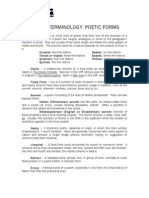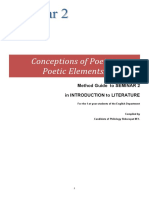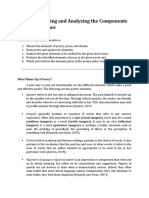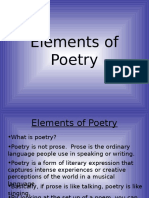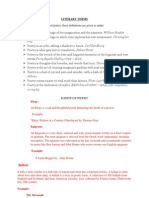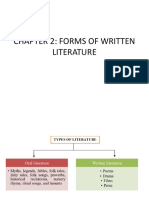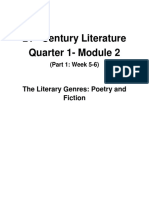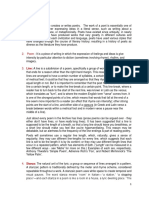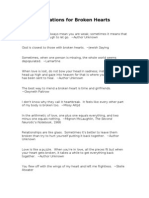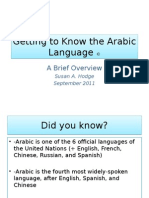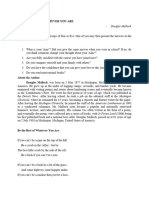0% found this document useful (0 votes)
61 views7 pagesLecture 3d Poetry
This lecture discusses the complexities of defining poetry, its historical origins, and its various forms, particularly focusing on lyric poetry. It highlights key elements such as imagery, voice, and the use of rhetorical figures, emphasizing the concrete nature of poetic language. Additionally, it explores the structure of different poetic forms, including the sonnet and its variations.
Uploaded by
kvasiljevic25Copyright
© © All Rights Reserved
We take content rights seriously. If you suspect this is your content, claim it here.
Available Formats
Download as DOCX, PDF, TXT or read online on Scribd
0% found this document useful (0 votes)
61 views7 pagesLecture 3d Poetry
This lecture discusses the complexities of defining poetry, its historical origins, and its various forms, particularly focusing on lyric poetry. It highlights key elements such as imagery, voice, and the use of rhetorical figures, emphasizing the concrete nature of poetic language. Additionally, it explores the structure of different poetic forms, including the sonnet and its variations.
Uploaded by
kvasiljevic25Copyright
© © All Rights Reserved
We take content rights seriously. If you suspect this is your content, claim it here.
Available Formats
Download as DOCX, PDF, TXT or read online on Scribd
/ 7








